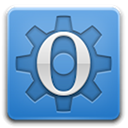Top Paradigm Alternatives: Enhancing Your Research Workflow
Paradigm is a powerful and highly regarded software for cognitive neuroscience, psychology, and linguistics research, offering millisecond-accurate stimulus presentation and a user-friendly drag-and-drop interface. While Paradigm excels in its capabilities, including integration with various EEG systems, eye trackers, and flexible Python scripting, researchers often seek alternatives due to specific needs, budget constraints, or a preference for open-source solutions. This article explores some of the best Paradigm alternative options available, helping you find the perfect fit for your experimental design.
Best Paradigm Alternatives
If you're looking to explore other robust and flexible tools for your research, these alternatives offer compelling features and diverse advantages that might align better with your project requirements.

PsychoPy
PsychoPy is a popular open-source Paradigm alternative, written in Python, designed for creating neuroscience and experimental psychology experiments. It's a cross-platform solution available for Free on Mac, Windows, and Linux, offering significant flexibility for researchers who are comfortable with programming in Python.

OpenSesame
OpenSesame stands out as a graphical, open-source experiment builder ideal for the social sciences. It provides a modern and intuitive user interface, making it an excellent Paradigm alternative for building complex experiments with ease. OpenSesame is Free and Open Source, supporting a wide range of platforms including Mac, Windows, Linux, Android, and Android Tablet, and is extensible through plugins and extensions.

SuperLab
SuperLab is a Commercial stimulus presentation software available for Mac and Windows. As a long-standing tool in the field, SuperLab offers a robust and mature platform for creating and running experiments, serving as a reliable Paradigm alternative for researchers who prefer a commercial solution with dedicated support.
Each of these Paradigm alternative options brings unique strengths to the table, from open-source flexibility to intuitive graphical interfaces and robust commercial support. We encourage you to explore each one to determine which best aligns with your specific research methodology, technical comfort, and experimental design needs.